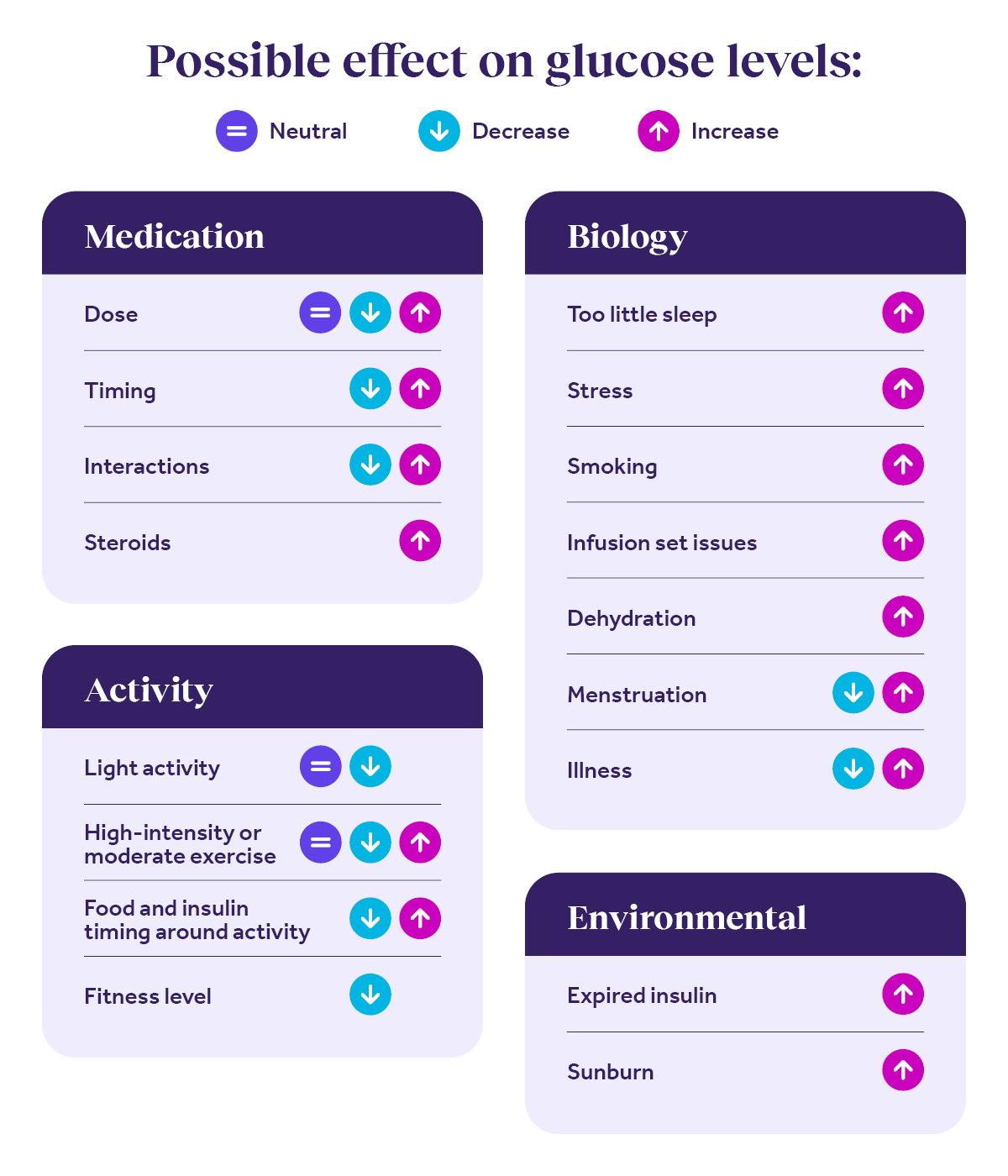How your habits affect CGM trends
Many factors can affect your glucose levels. Thanks to your CGM, you have 24/7 access to your numbers. This can help you gain a better understanding of some of the possible reasons behind your trends.

Blood sugar responses can be different for different people. These are some of the responses people may be likely to have.
Your doctor can help you figure out what’s causing your ups and downs. Or, schedule a session with a coach.
In this article:
Was this article helpful?
Sign up to unlock your health, your way at no cost to you.
This content is not intended to be a substitute for professional medical advice, diagnosis or treatment. Always seek the advice of your physician or other qualified health provider with any questions you may have regarding a medical condition.
